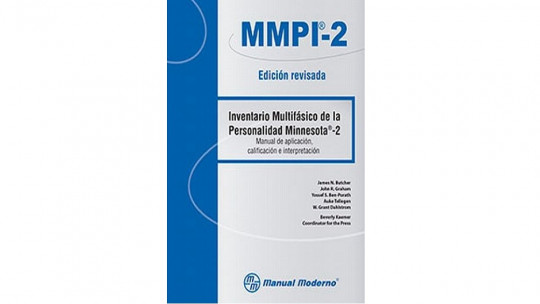
Human personality is one of the most difficult psychological constructs to describe Some theories define it as those stable and distinctive characteristics of a person that are manifested through behavior.
Despite the complexity of its definition, there are some evaluation tests that allow for a psychological personality profile that is closely adjusted to the reality of the subject. One of the most used is the MMPI-2 whose operation we will review throughout this article.
What is the MMPI-2?
The Minnesota Multiphasic Personality Inventory In this specific case, the MMPI-2 is one of the most popular instruments within psychology to evaluate personality, global and specific psychopathological characteristics of the person, or psychosomatic alterations.
This latest version developed in 1989 based on the original MMPI is very popular because it allows the mental health professional to establish valid and reliable opinions or judgments about the patient’s personality. In the same way, makes it possible to create a very complete psychological profile
This inventory of personality constructs is made up of 567 dichotomous option items in which the person must choose between true or false depending on whether they identify with the statement or not.
The MMPI-2 gives us the opportunity to evaluate basic personality characteristics using a series of scales, categorized as basic or additional. The basic scale consists of 370 items that are divided into validity scales and clinical scales. While the additional ones allow expanding the information of the basic scales, discriminating the content and nature of the symptoms.
Finally, this test is considered a basic evaluation instrument, so it can be applied in all those areas in which an evaluation of personality traits is needed. Among these administration contexts are: research centers and psychological clinics, teaching centers or military or defense contexts.
Features of this psychological test
The MMPI-2 has a series of distinctive characteristics that make it the most used test when developing a psychological personality profile These characteristics occur both at the level of administration, as well as objectives and reliability.
1. Objective
As indicated at the beginning of the article, the objective of the MMPI-2 is to develop a psychological profile of the personality traits of the person evaluated. As well as identifying possible psychopathological characteristics, or abnormal personality traits
2. Material
This test can be performed both virtually and classically (pencil and paper). For this you will need the MMPI-2 question protocol and the sheets with the answer grid. In addition, the correction key is required for evaluation.
3. Administration
Standard instructions for administration of the MMPI-2 are included in the MMPI-2 test package. The estimated time to administer the test varies between 90 and 120 minutes, and should always be done in the presence of a psychologist or mental health professional. If possible, accompanied by a professional observer.
Due to the complexity of the test, it is necessary that the evaluator have read the material before using it. Next, the person being evaluated will be given the necessary material and what the test consists of will be explained to them. Throughout this, the evaluator can answer any doubts that arise from the evaluated person, since the MMPI-2 has greater validity if it answers all the items.
4. Score
After finishing the test, we will move on to the correction stage, in which the evaluator will grant one point for each affirmative or true answer of the patient and 0 points in the boxes marked as false At the end, all the points are added to obtain the raw score of the scale from which the T score will be obtained that will allow us to interpret the results of the test.
Your scales
As mentioned previously, the MMPI-2 It consists of 567 items arranged in different evaluation scales These scales are divided into basic scales, composed of validity scales and clinical scales, and additional scales.
1. Clinical scales
The objective of these scales is to investigate a possible presence of psychopathological symptoms. Within this scale there are the following personality factors:
2. Validity scales
The validity scale allows us to detect if there is intention to lie or incoherence in the responses of the evaluated person. This scale includes:
3. Additional scale
As a complement to the basic scales, and with the intention of expanding the information provided by them, the evaluator can use additional scales that measure constructs such as:
How are the scores interpreted?
Depending on the T score obtained by the patient, the scales can be interpreted based on the following classification:








